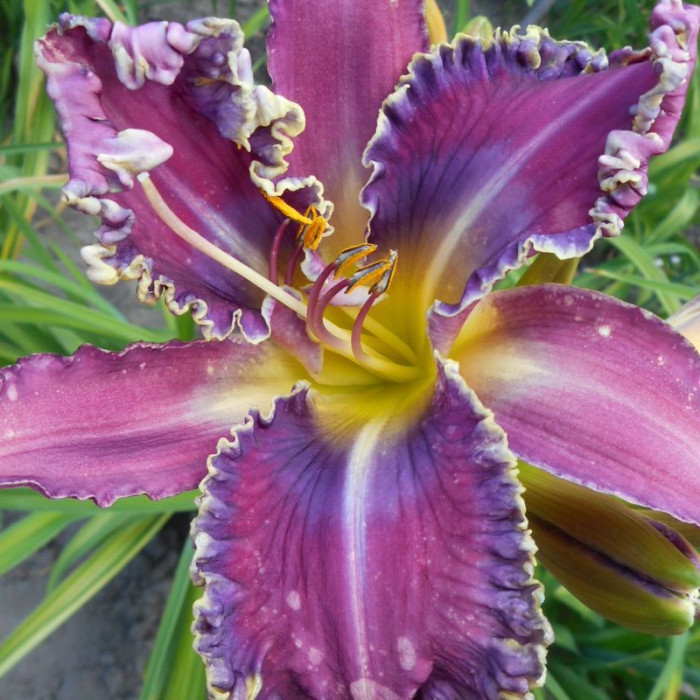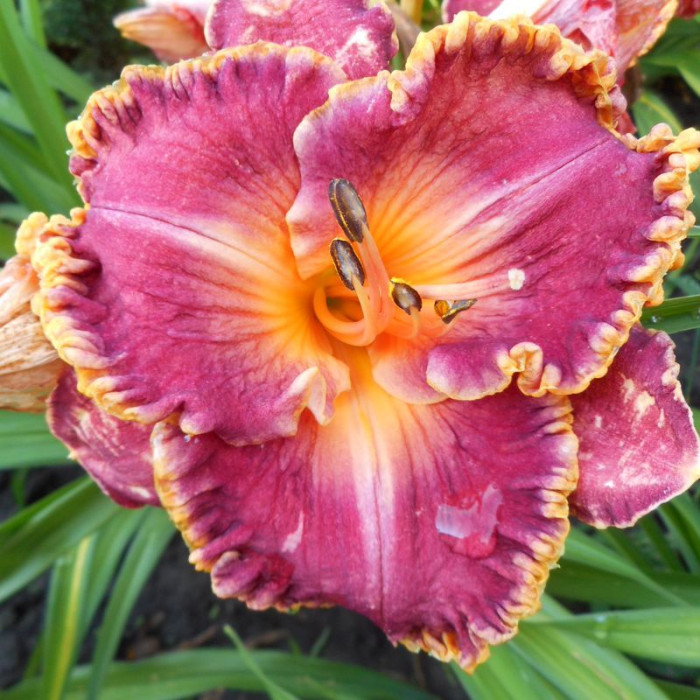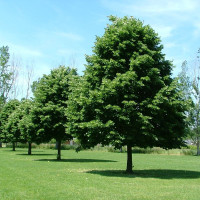Daylily or day lily (mix) / Hemerocallis - is a long and abundantly blooming flower, the diameter of the flowers is 13 cm. Previously, daylily was called “April” because each flower opens for only one day, and they thought that it was only orange or yellow. But even then, thanks to its outstanding properties of unpretentiousness, annual abundant and long-lasting flowering, absolute winter hardiness and the ability to grow in one place for decades, growing moderately and becoming more and more luxuriant, it could be found in almost every garden and front garden.
The leaves die off in winter. Daylilies can be classified as the most unpretentious perennials. The main and most important task of growing daylilies is proper planting. An adult daylily bush forms 20–30 peduncles, on which 15–20 flowers bloom alternately. Daylily - loves the sun, because only there its flowers will show themselves in all their glory (but light partial shade is also suitable).
During drought they need watering. After flowering, you need to cut off all flower stalks. In the fall, in October, you need to cut off all the old leaves to ground level. The variety is winter-hardy and overwinters without shelter.
Daylilies combine with almost all plants, so they are grown in any type of garden. Daylilies look very beautiful as border plants, in single plantings or in small groups on the lawn.
Recommendations for sowing daylily seeds:
Method 1: Before sowing, the seeds can be disinfected in undiluted hydrogen peroxide so that the seeds are completely covered with liquid (pour the peroxide into a glass, throw the seeds in, stir and let them sit for 30-40 minutes).
The seeds can then be dried (no need to rinse) and then sown at the appropriate time.
2nd method:Just as in the first case, we disinfect daylily seeds in undiluted hydrogen peroxide for 30-40 minutes. After this time, drain the peroxide, fill the seeds with plain water and leave for another 12 - 20 hours to swell. But such seeds need to be sown immediately and in moist soil (not dry).
3rd method: We germinate the seeds before sowing:
We take a zip bag measuring 10x12cm, pour about a third of the bag into large vermiculite, then pour two tablespoons of ordinary water into the bag and pour daylily seeds into it (mix them with vermiculite). We close the bag and keep it on the shelf of the rack, or in any other bright place, once every three days we open the bag and check the condition of the seeds; through the transparent walls of the bag, the sprouted seeds will be clearly visible.
After seven to eight days, the seeds should sprout: produce one white sprout each. Germinated seeds can be planted in cups with moist peat soil, and then, when the seedlings grow a little, plant the seedlings in a flower bed. I use this method for valuable seeds, as well as for wrinkled or dried seeds, which can also be brought back to life in this way.
Most often, the first method is used and sown with dry seeds (treated with hydrogen peroxide and then dried). Daylily seeds are sown immediately in open ground from April 12 to May 1.
For sowing, make furrows, as for sowing onion seeds, to a depth of 5-7 cm and sow the seeds in these furrows, it may turn out dense, but this is not scary, because after flowering you can dig up the flowering specimens and transplant them into a separate flowerbed, and thus thin out plants in a row. After sowing, you need to cover the seeds with soil and water the furrows. Shoots appear in 2-3 weeks.
In the first year, you need to weed the bed with young crops so that the plants get stronger and grow, but in the second year these bushes are no longer afraid of weeds.
In the second year, from sowing the seeds, some of the daylilies will bloom, but not all, but only half, and the second half of the seedlings will bloom in the third year from sowing. If you sow daylily seeds every year, the flowering of new seedlings in your garden will become an annual holiday.

No questions about this product, be the first and ask your question.





































